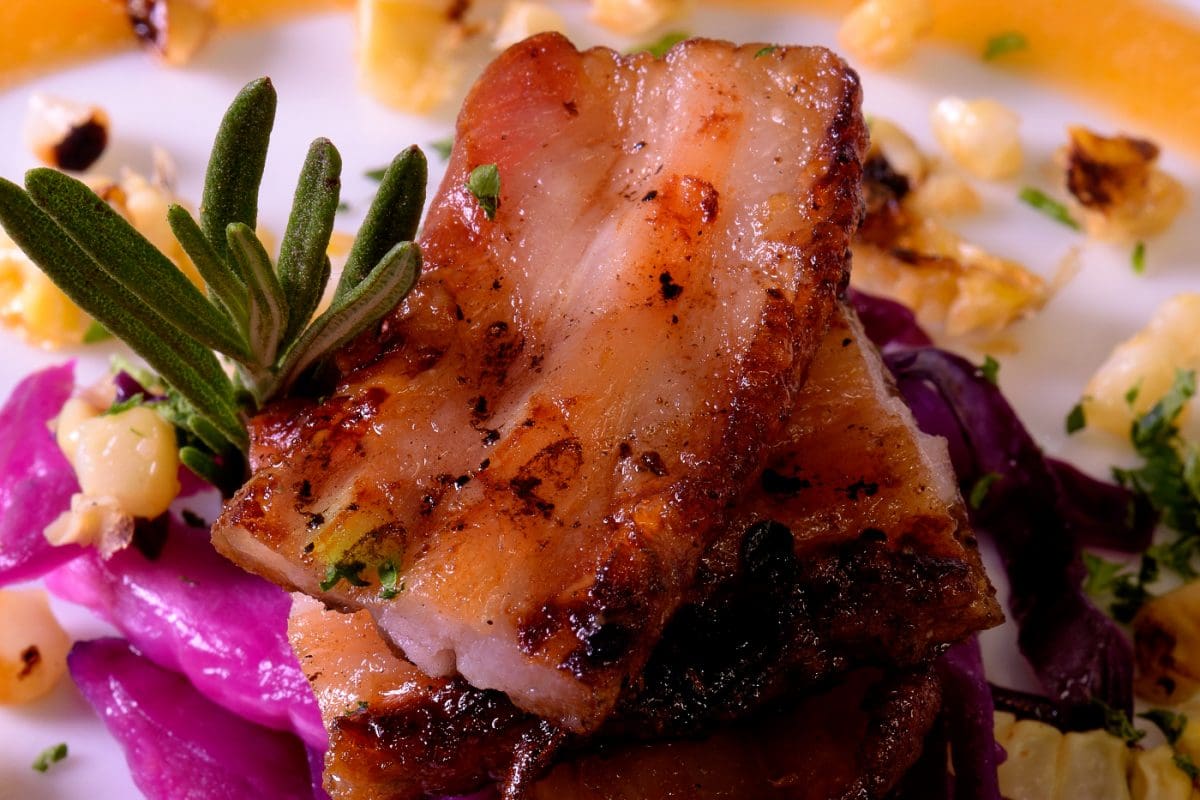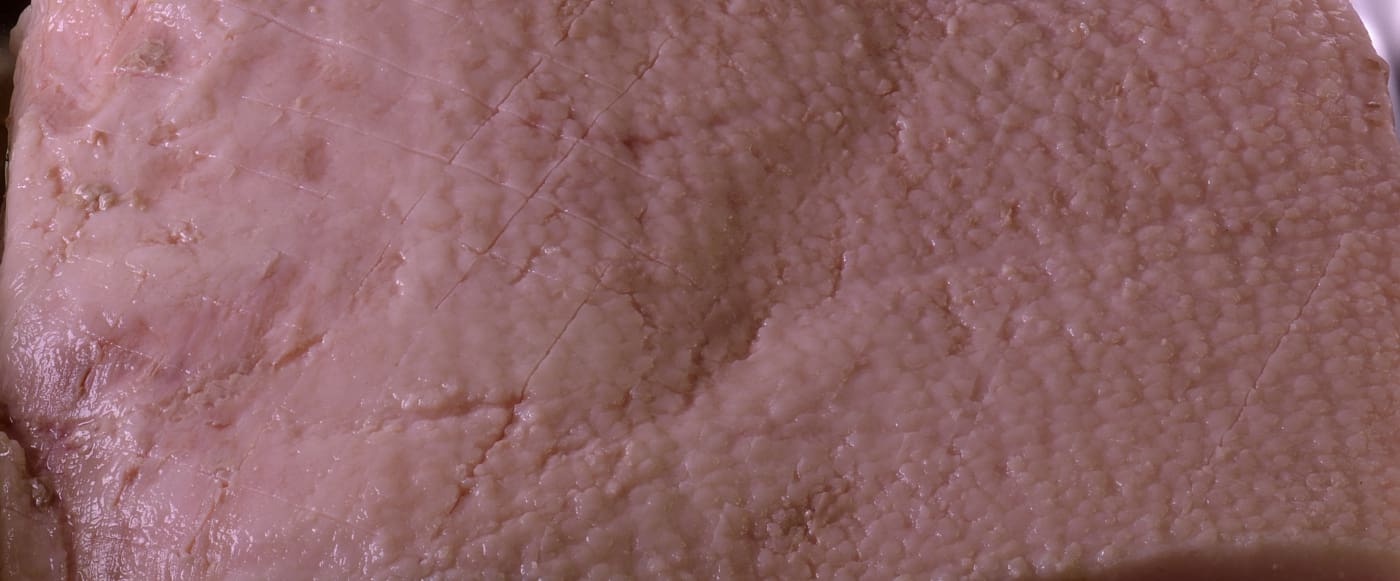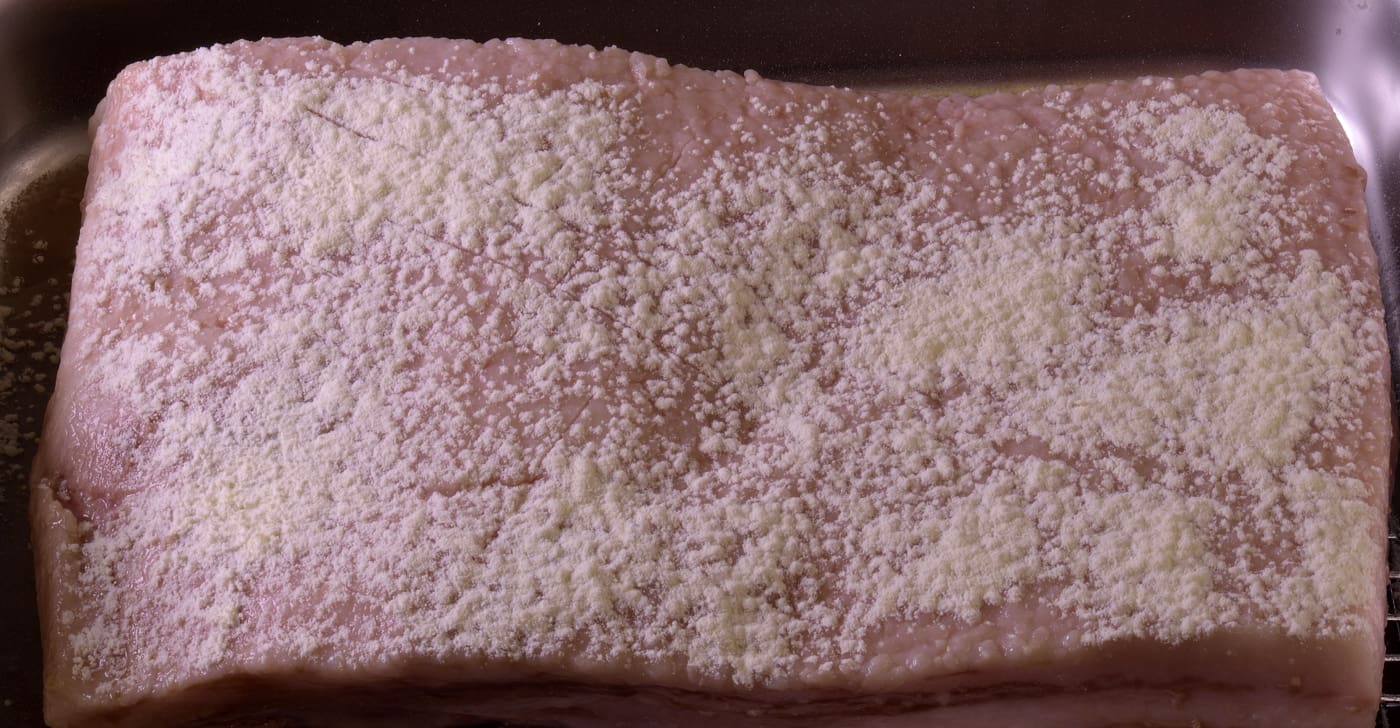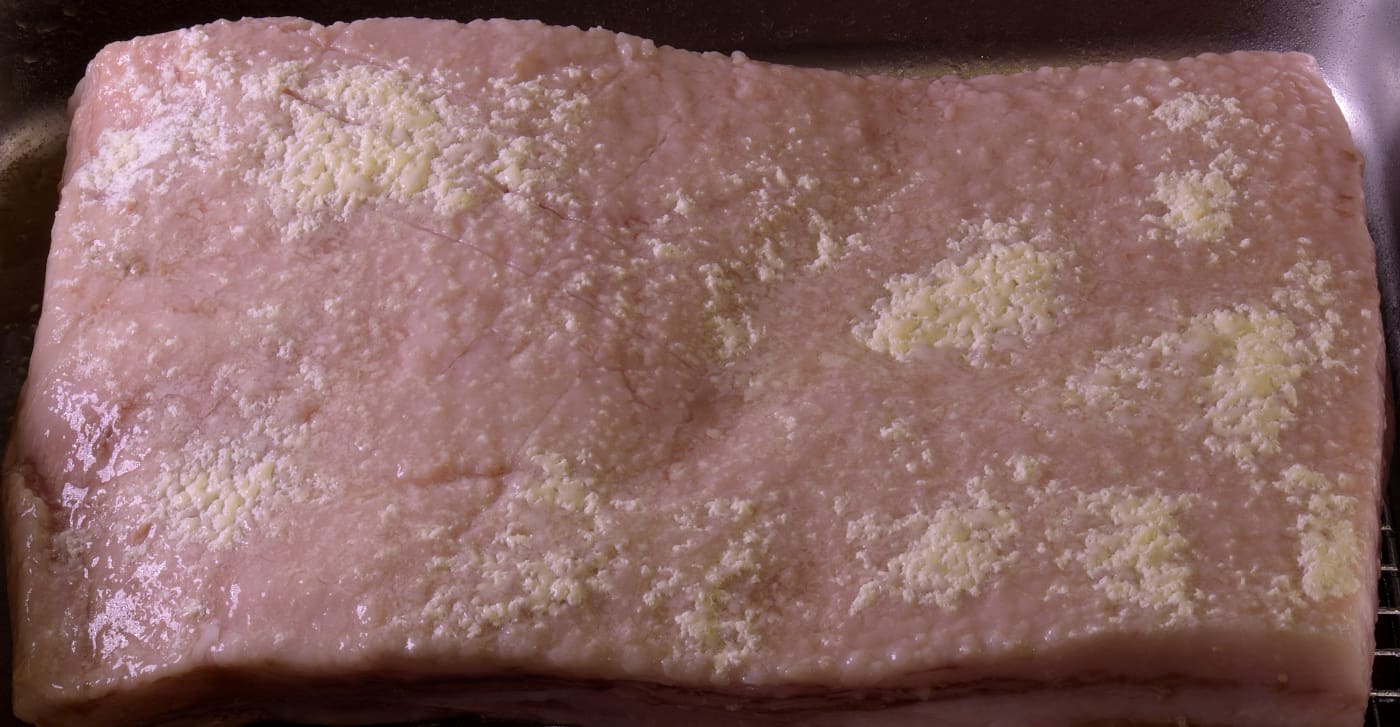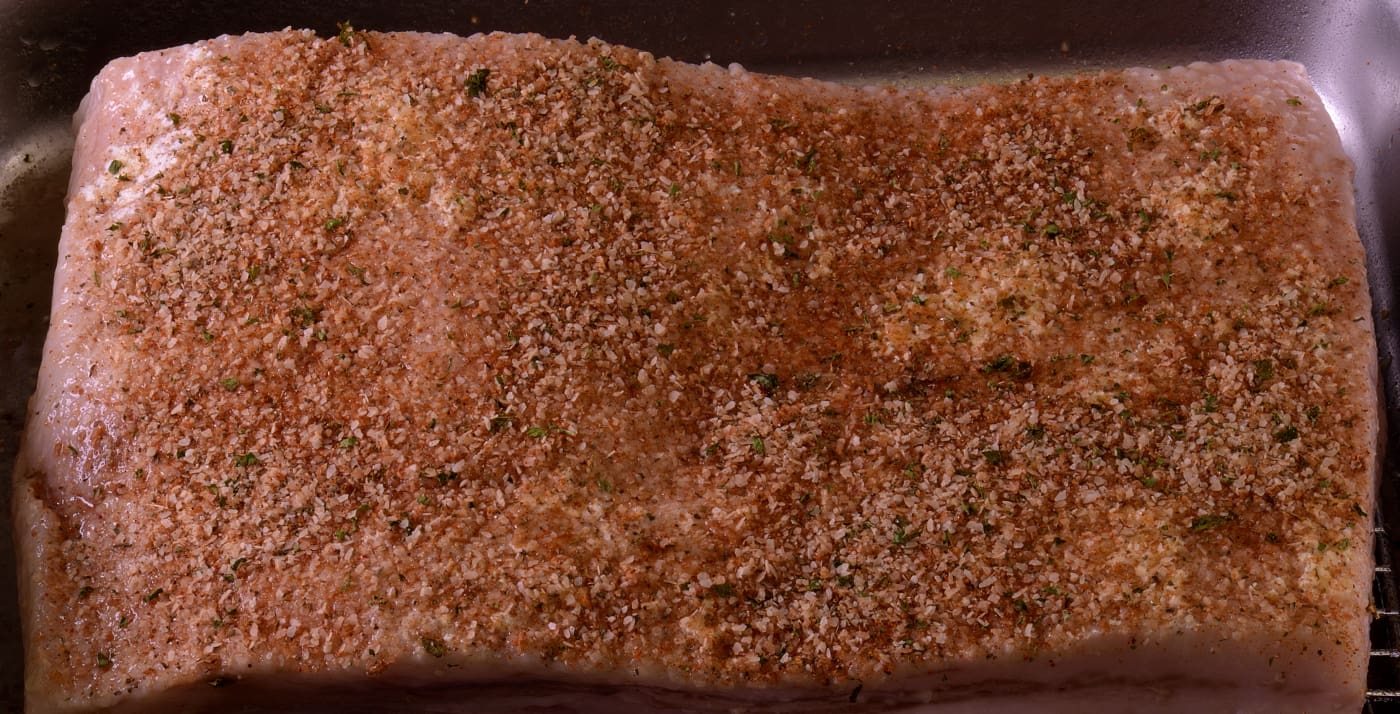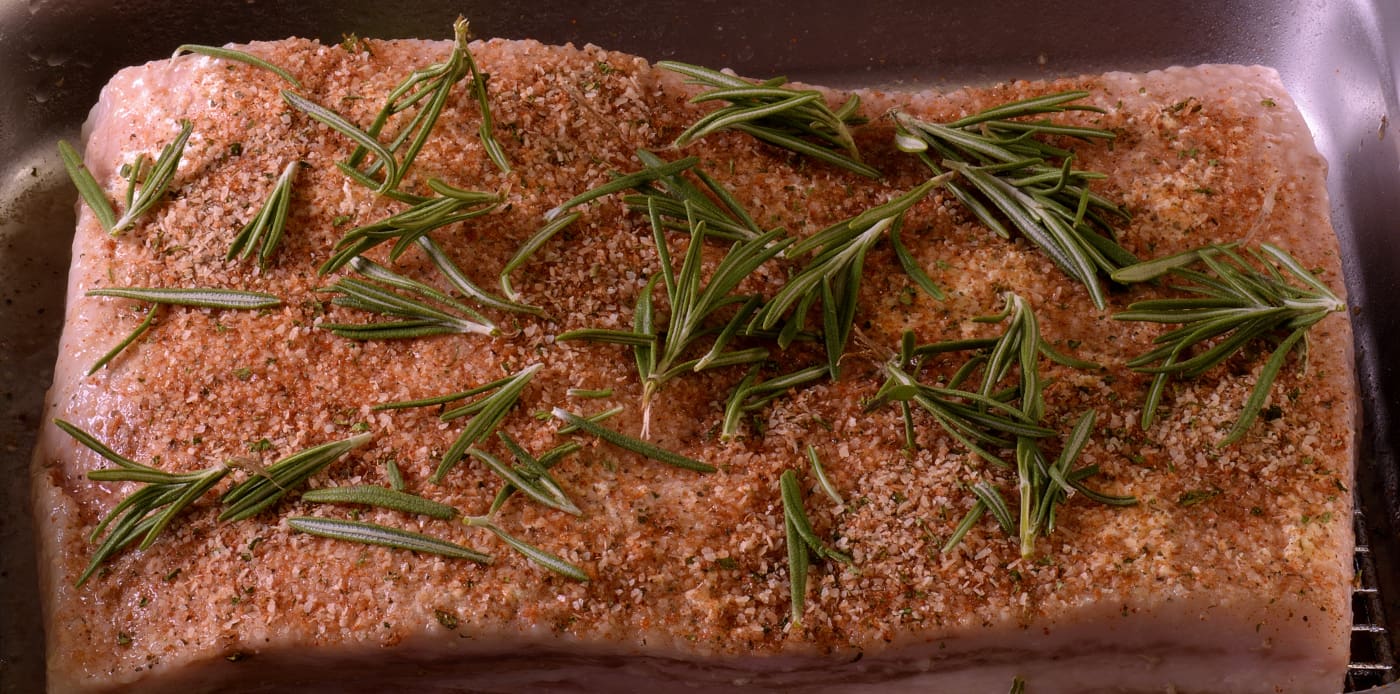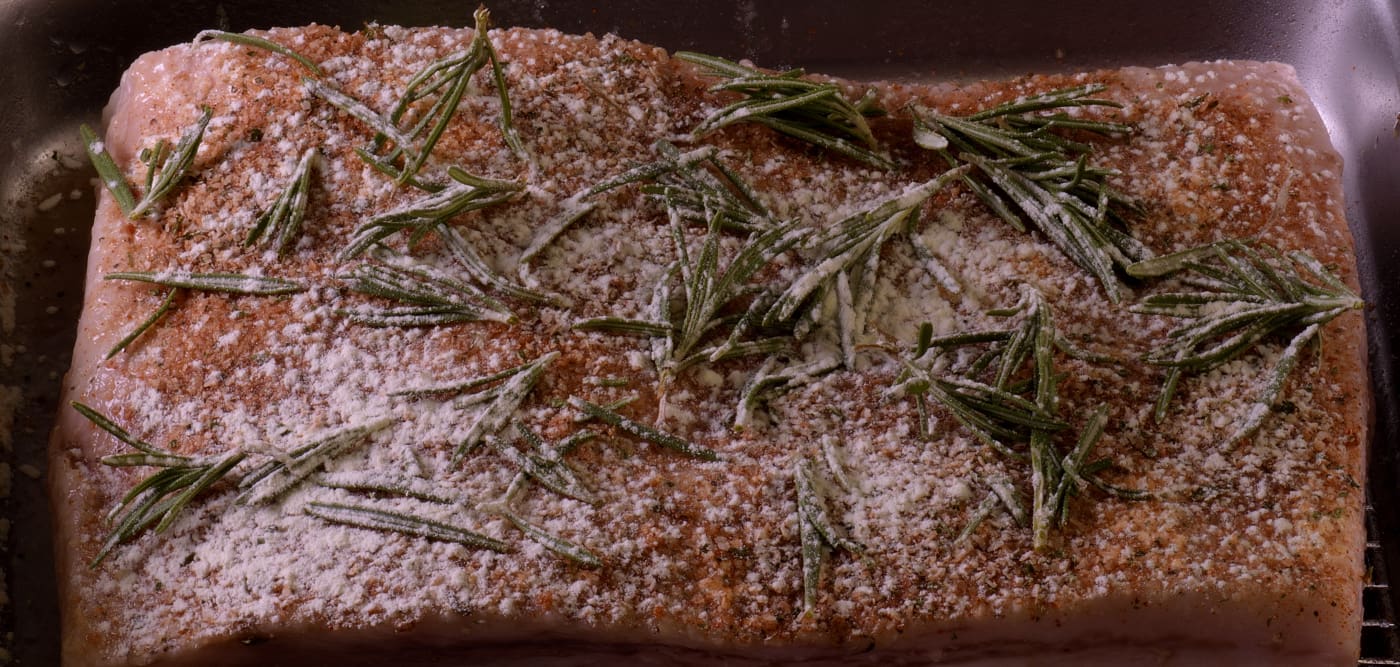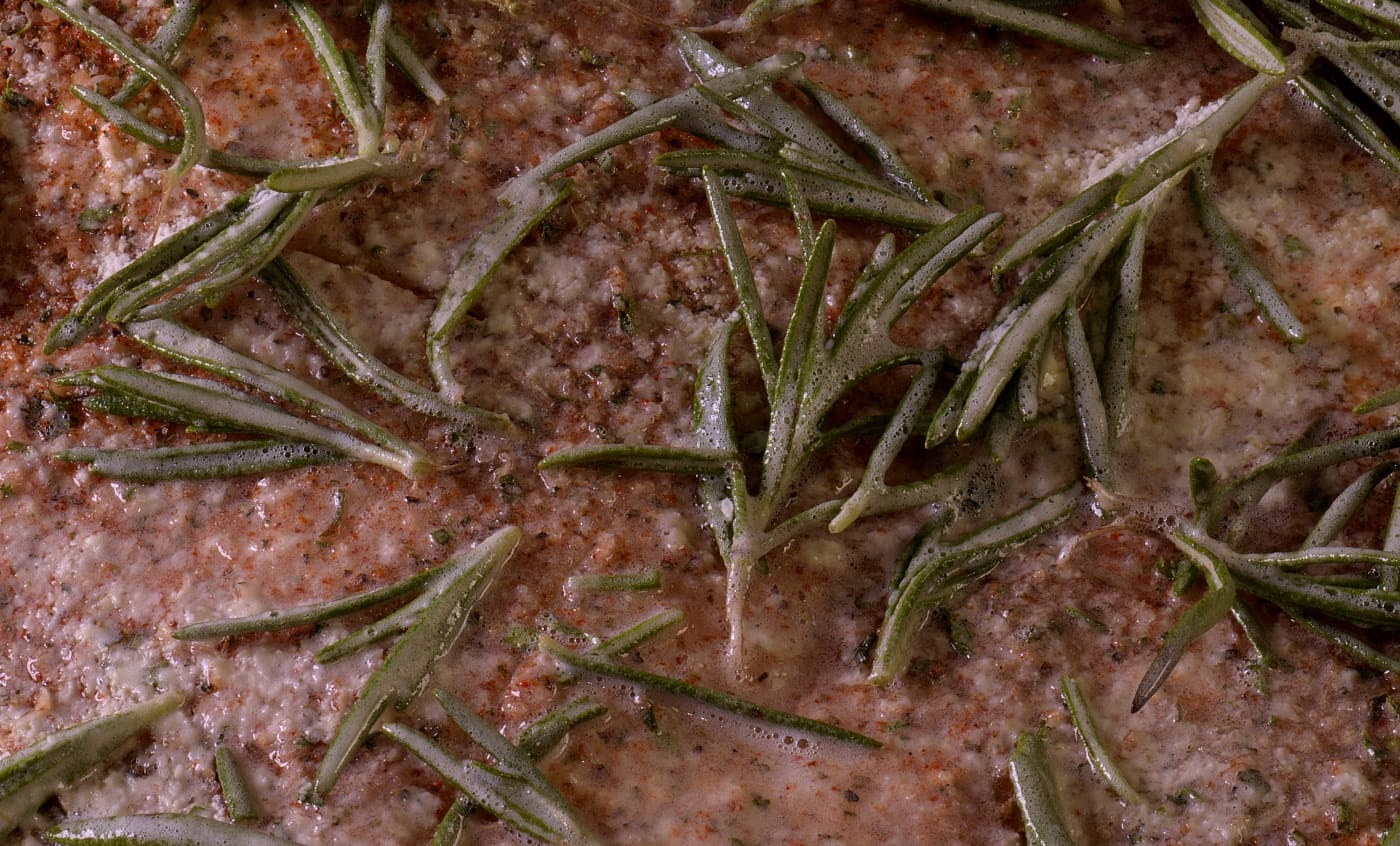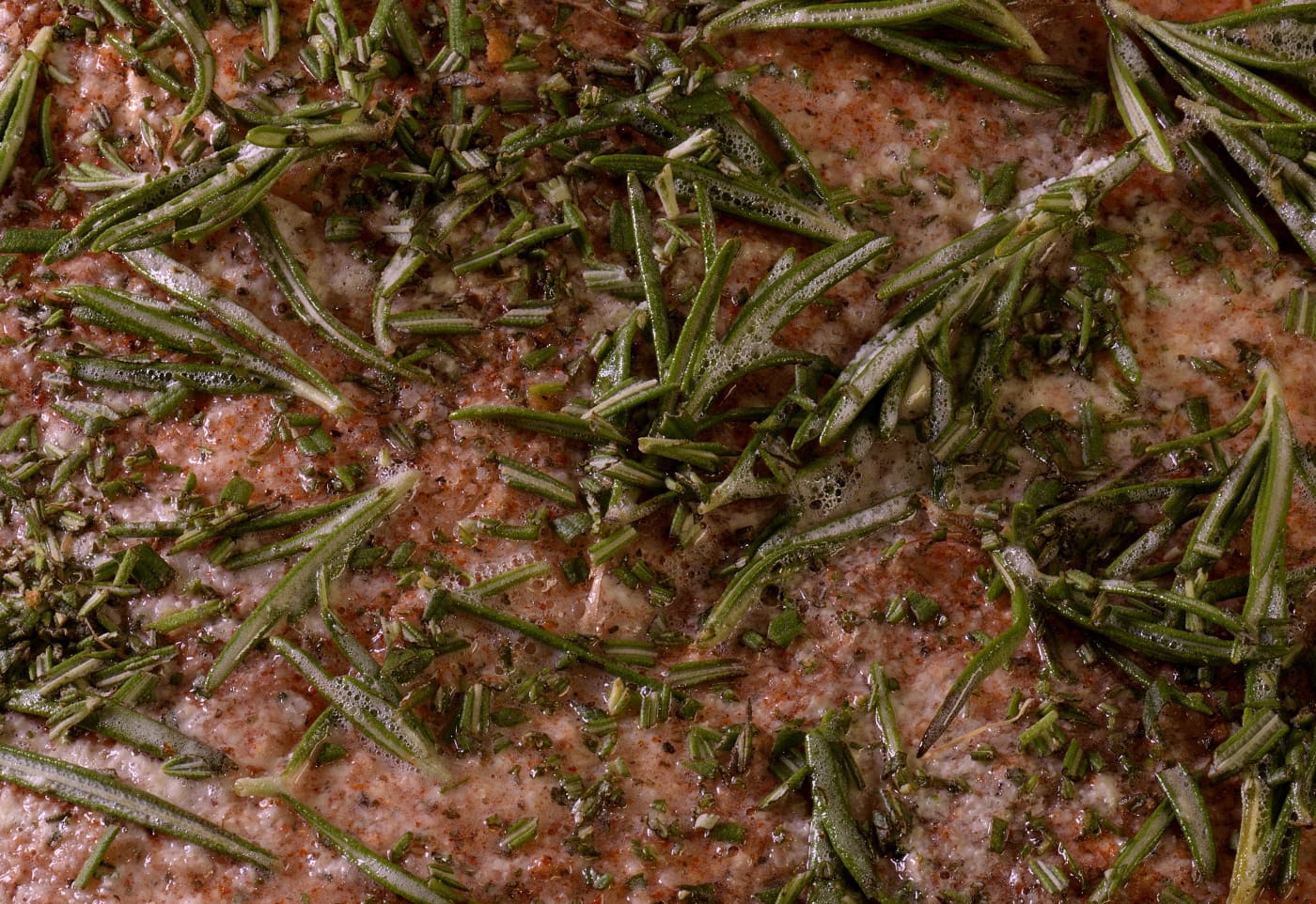
Above: Inkbird Immersion circulator, Lipavi C15 container, Lipavi C15L lid, N15 polycarbonate racks.
Serves 3-6 per lb./450 g
Level of difficulty 3
Procedure:
Seal the pork belly in heat rated sous vide bags and process at 135 F/57 C for 18 hours. This will pasteurize and tenderize the protein. Shock cold in iced water until the package achieves 70F/21 C. Cold shocking prevents autolysis in the cut and also protects other foods in the refrigerator from temperature contamination. Refrigerate at 40 F/4 C for at least 12 hours. In this state, the processed pork belly can be held for up to two weeks without any deterioration.
The initial smoking step
Submerge the package in hot tap water (110 F/43 C) or a working sous vide bath to melt the gel in the package.
Remove the roast from the package and stage to drain into a pan with a rack. Pat the roast dry.
Use a sharp knife to cut hashmarks into the surface approximately 0.5″/13 mm deep.
Use a dredge/shaker to sprinkle the surface with powdered egg whites. A fresh egg white beaten with an equal amount of water will achieve the same result–apply sparingly.
Use a spray bottle filled with water to dissolve the powdered egg white–skip this step if you are using fresh egg white.
Sprinkle with your choice of seasonings. Today’s version was kosher salt in the amount of 2 teaspoons per lb./450 g with a pinch each of garlic, paprika, sugar and dried parsley.
Sprinkle the roast with half of the rosemary sprigs, stems removed. Save a few for garnish.
Dust again with the powdered egg white.
Mist again with water to dissolve the egg whites.
Chop the rest of the rosemary and sprinkle over the roast.
Smokin’
Set the smoker to achieve as close to 300 F/150 C as possible. We use a pellet grill, but a traditional back yard smoker equipped with a BBQ thermometer can also be used.
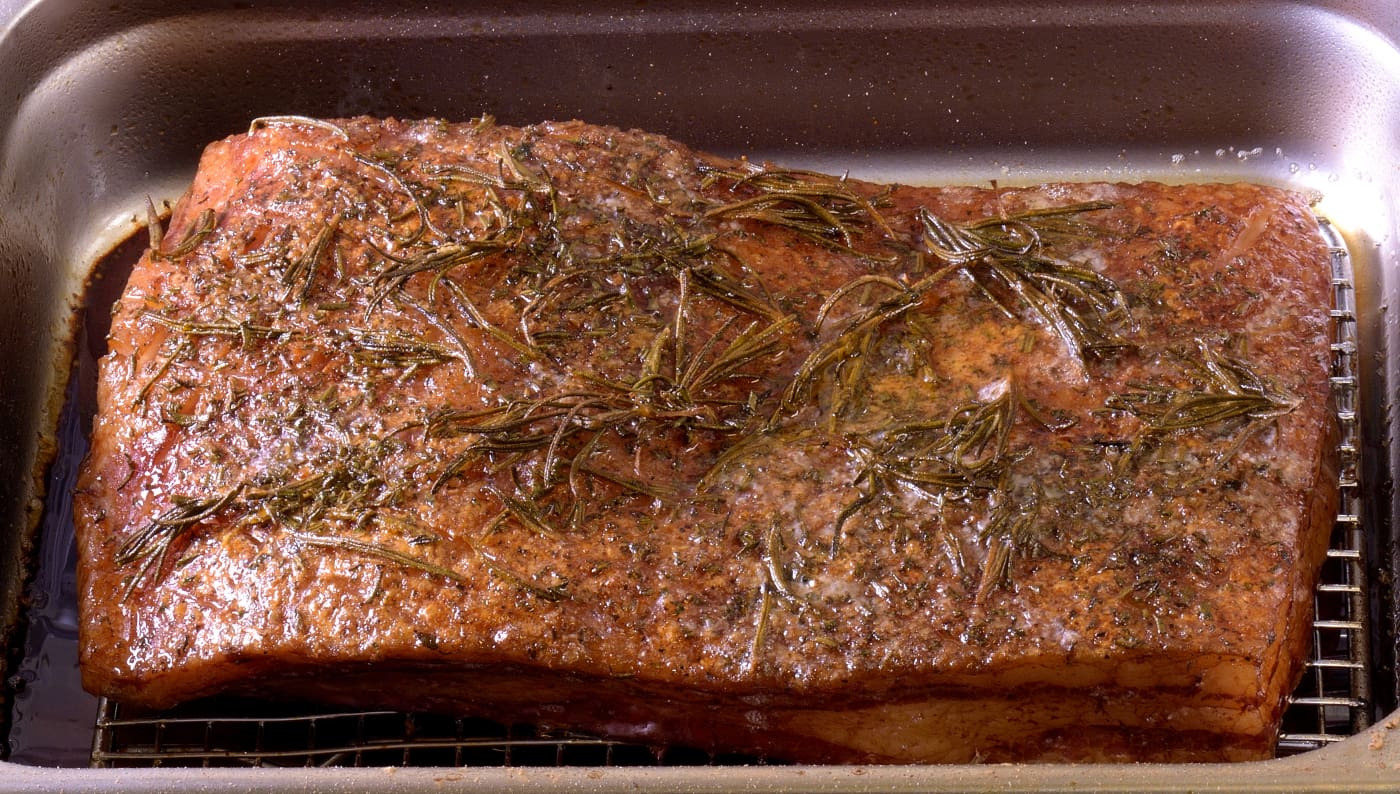
Smoke the pork belly for a minimum of two hours to achieve the desired appearance and an internal temperature of approximately 165 F/74 C.
While you wait
Remove the corn from the cob, season and sear in a small amount of fat until lightly browned. Set aside.
Make the Apricot glaze and the Braised red cabbage. Refrigerate the glaze and keep the red cabbage warm.
And then…
Once the roast has achieved the desired temperature and color, harvest the fat melted in the pan and reserve–there will be more later! Allow the pork belly to cool at room temperature until it can be easily handled–approximately half an hour. The crust will be evident, but the meat itself is still bursting with juice because of the high fat content.
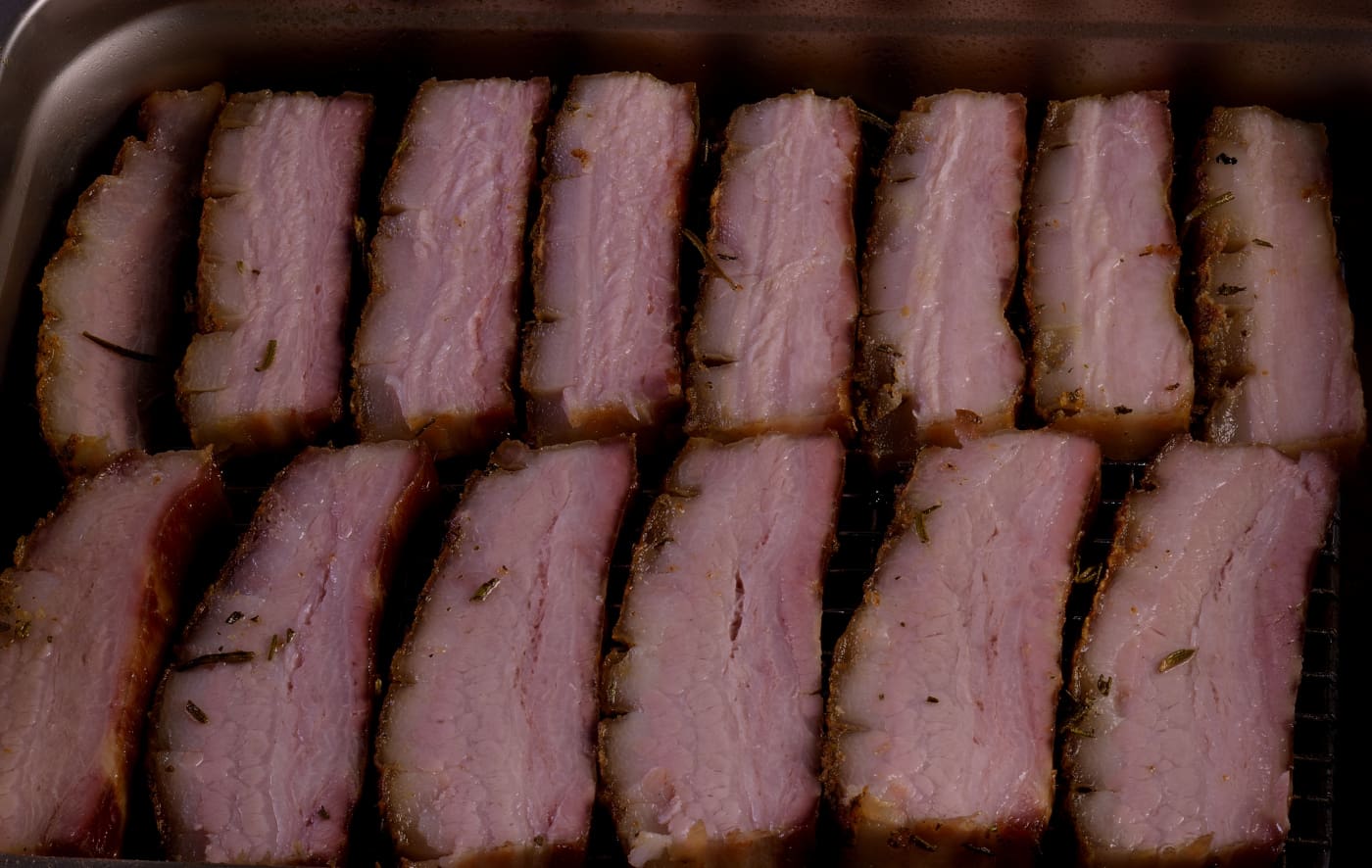
Slice the smoked belly approximately 0.5″/15 mm thick and arrange on the rack.
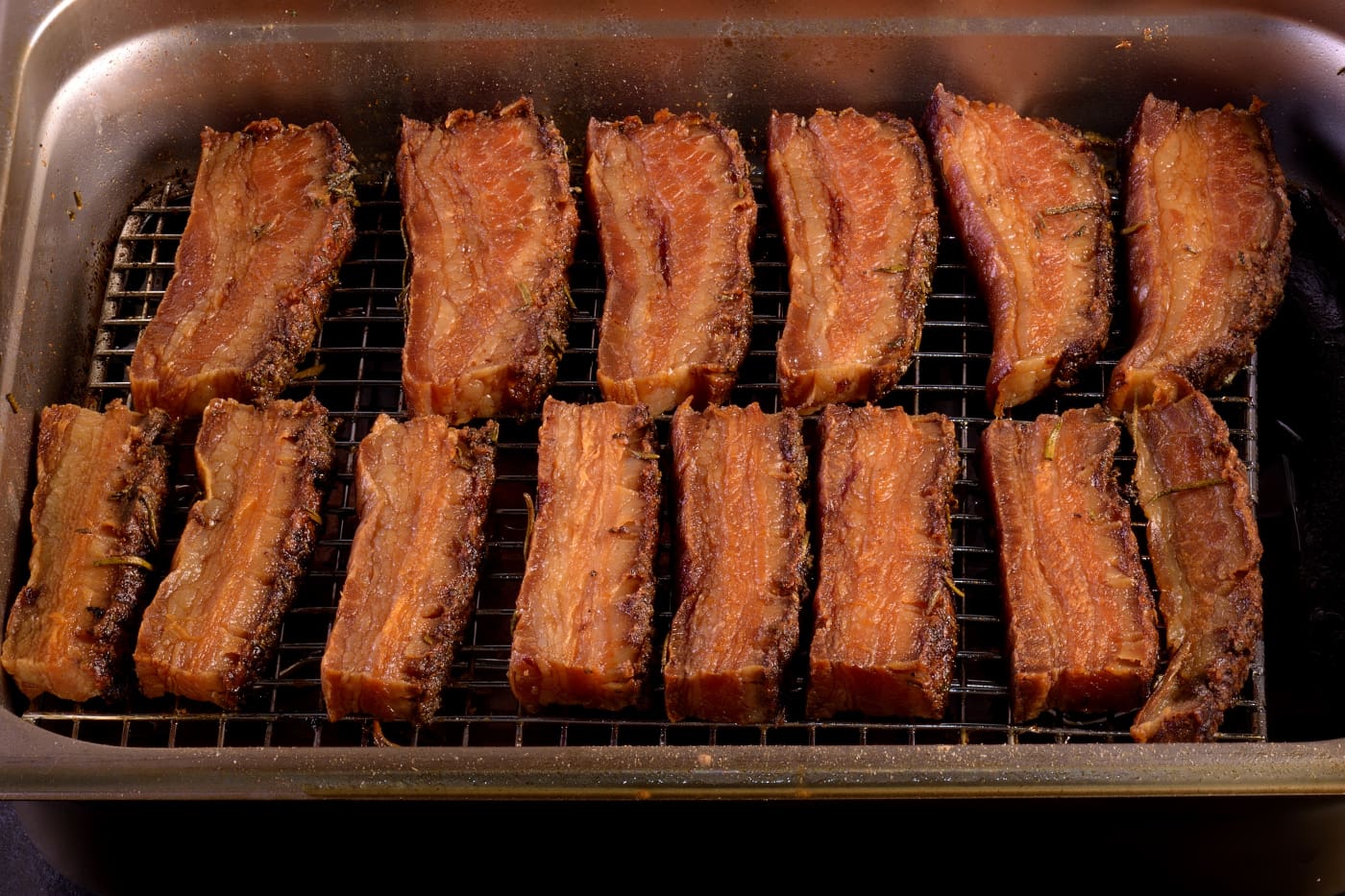
Return to the 300 F/150 C smoker for an additional 2 hours.
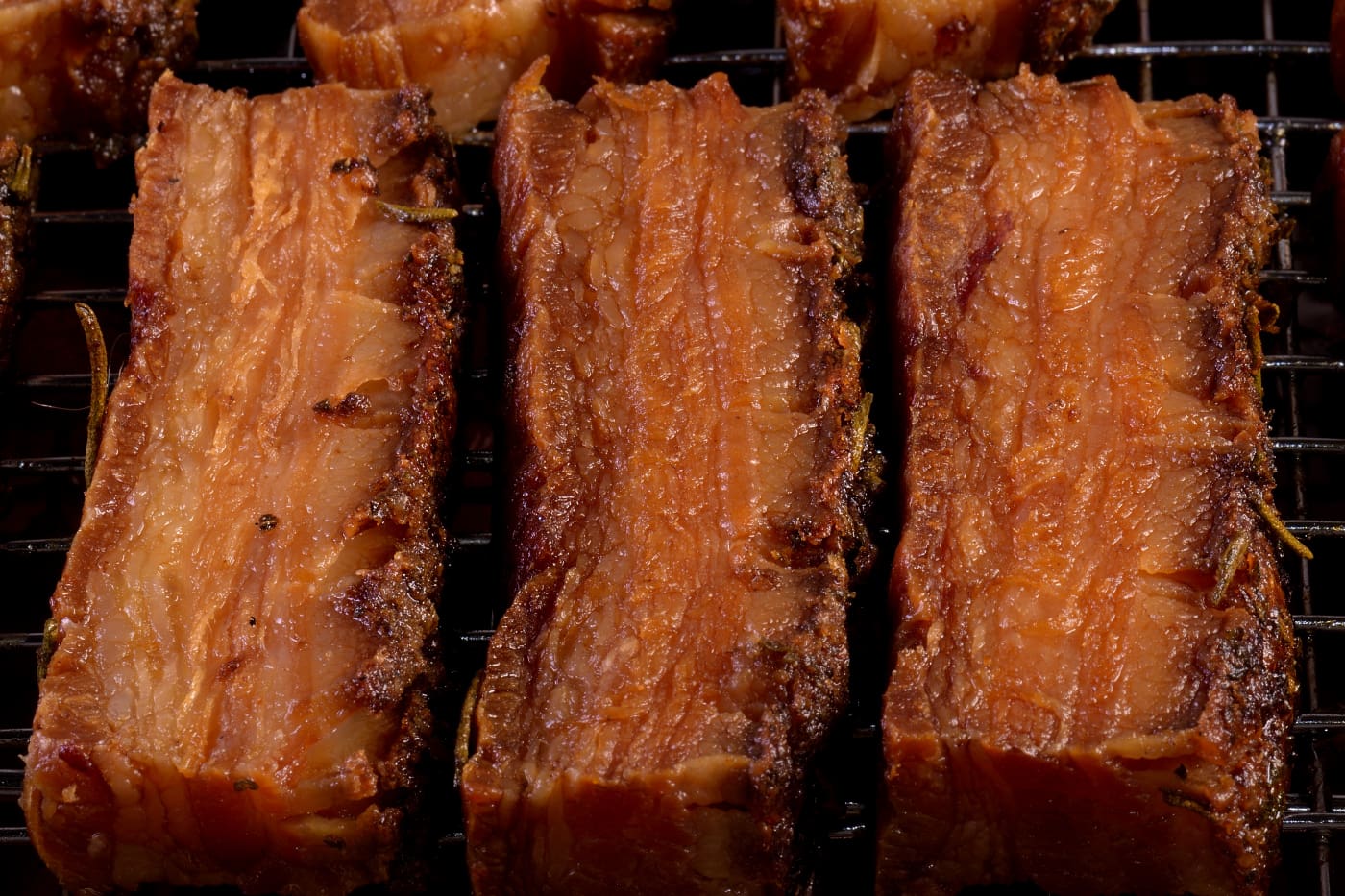
Definitely NOT bacon.
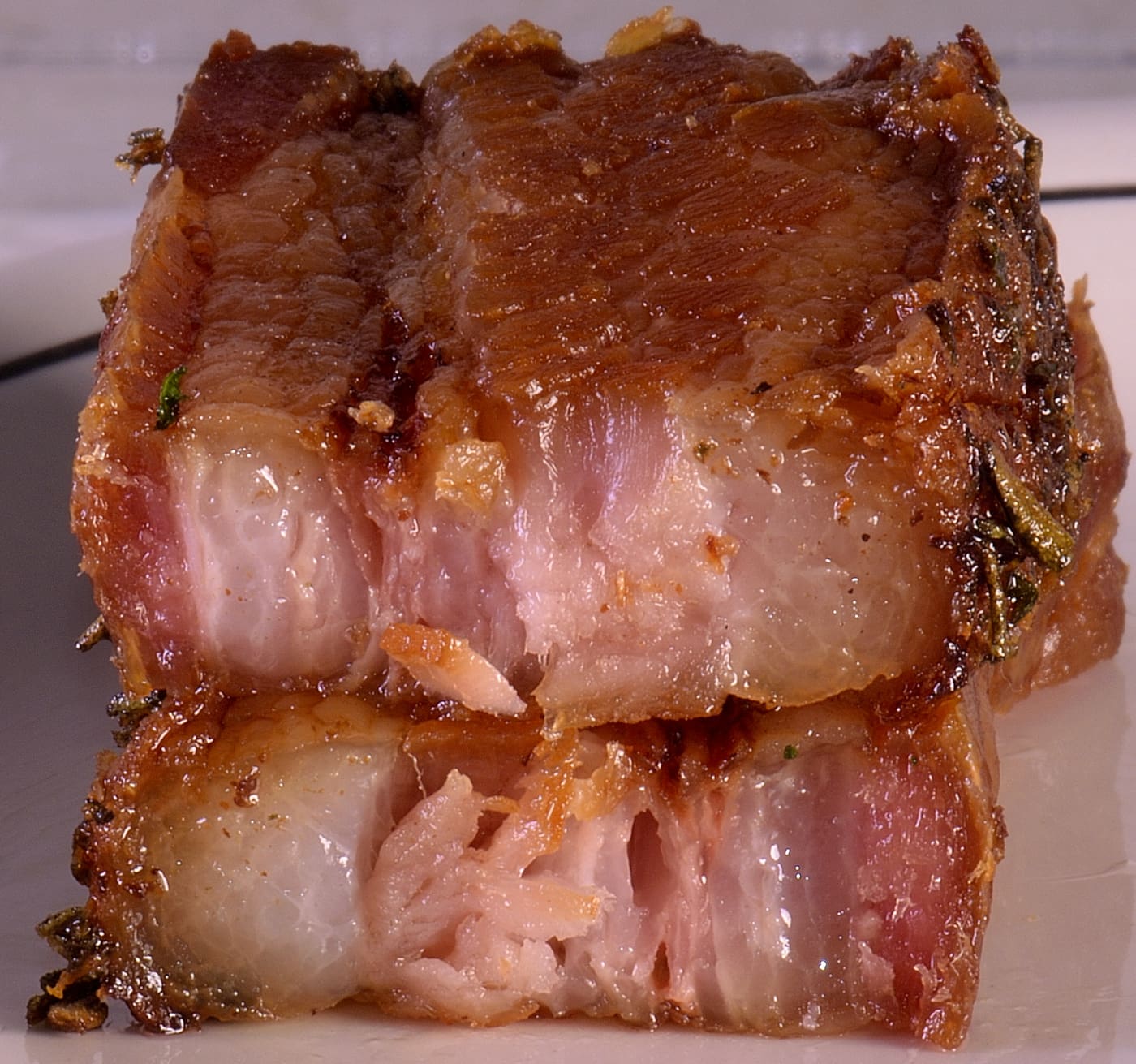
Unique, succulent.
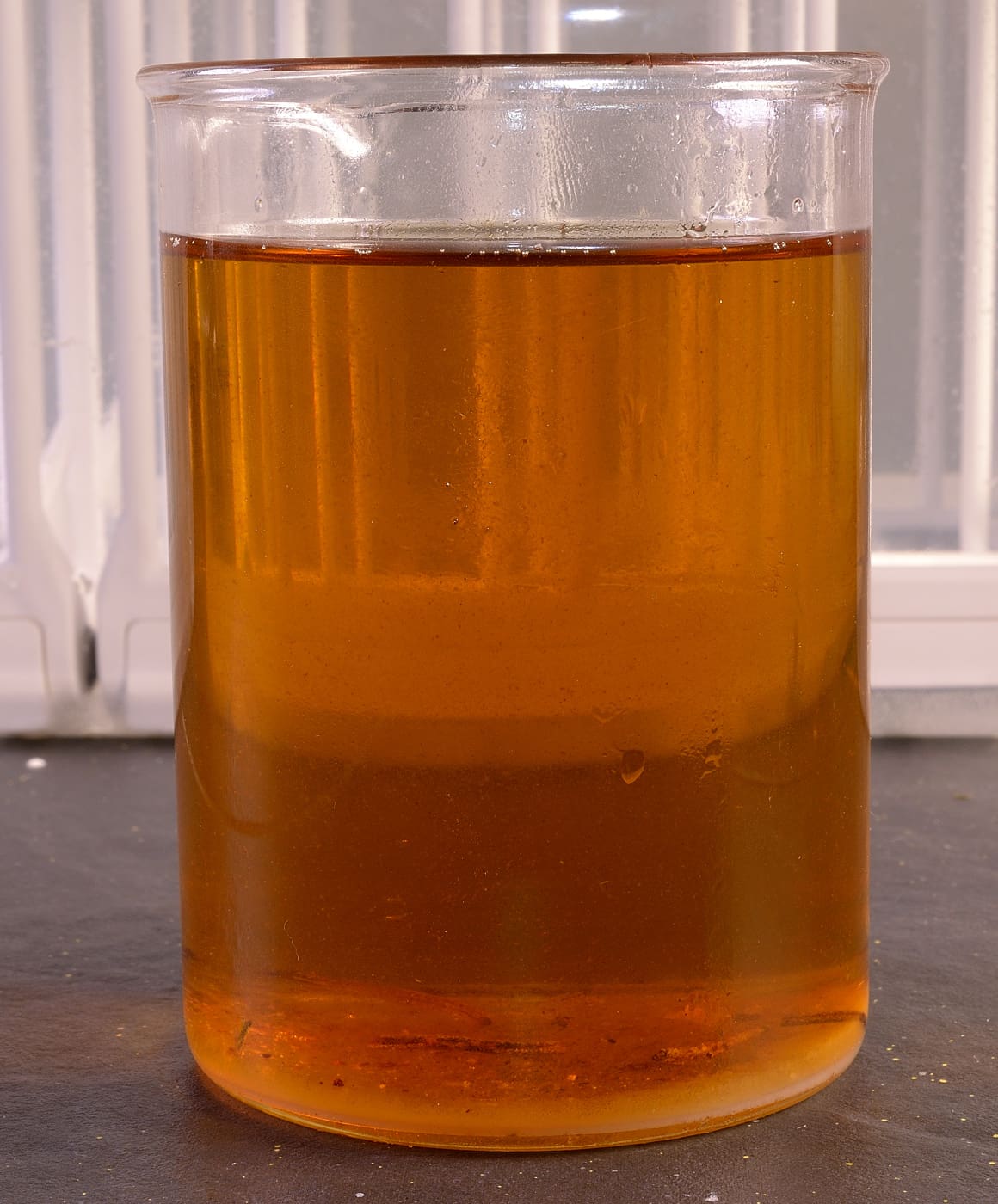
Remove the remaining rendered fat from the pan. Great for hash browns and other uses!
Dissolution
Add 2 cups of water to the pan and bring to a simmer to dissolve the drippings.
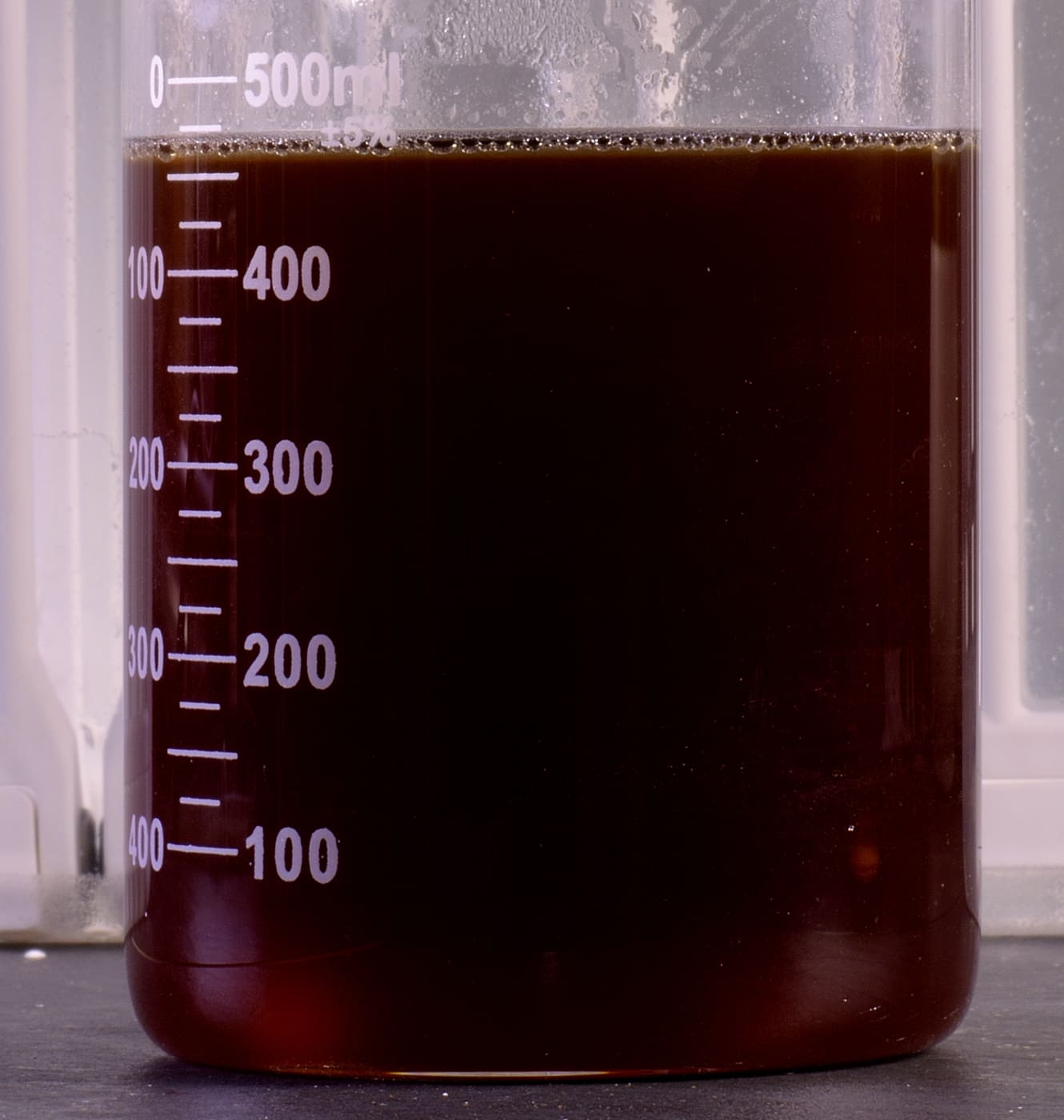
Clarify the juices in the pan according to the method explained HERE. This lightly seasoned broth can be used in any savory recipe that calls for water or stock.
Culmination
Once the pork belly has been smoked (twice!), it will yield excellent results in any recipe that calls for bacon. Sandwiches, casseroles, soups and even chili become just that much more interesting.
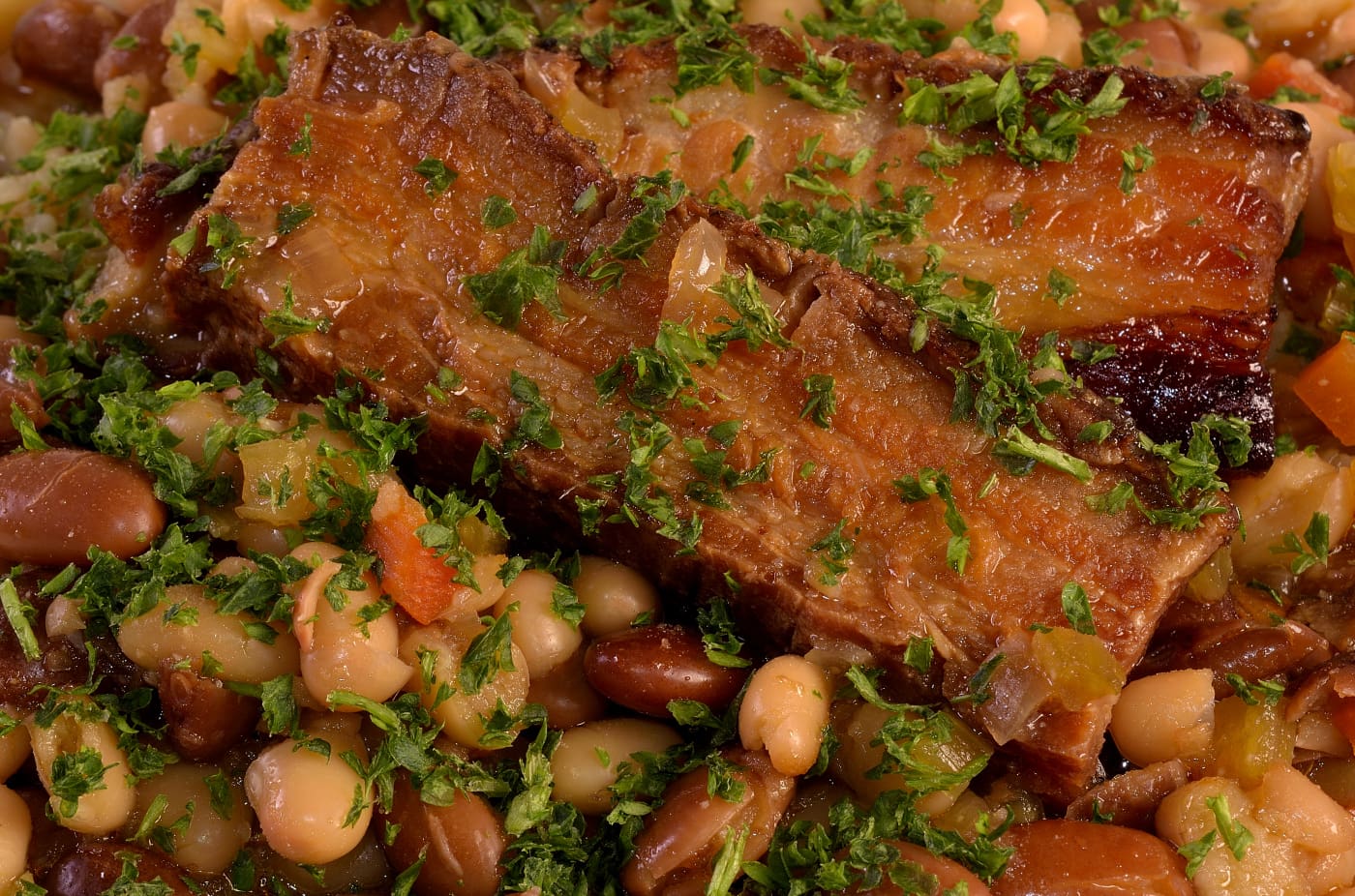
Above: Pork ‘n’ Beans…
You will notice a slightly different and yet vibrant characteristic in the flavor and texture profile. Smoked pork belly can also be utilized in “forward looking” recipes, like the one below utilizing red cabbage, roasted corn and apricots. Sweet flavors go especially well, as do fresh herbs and citrus.
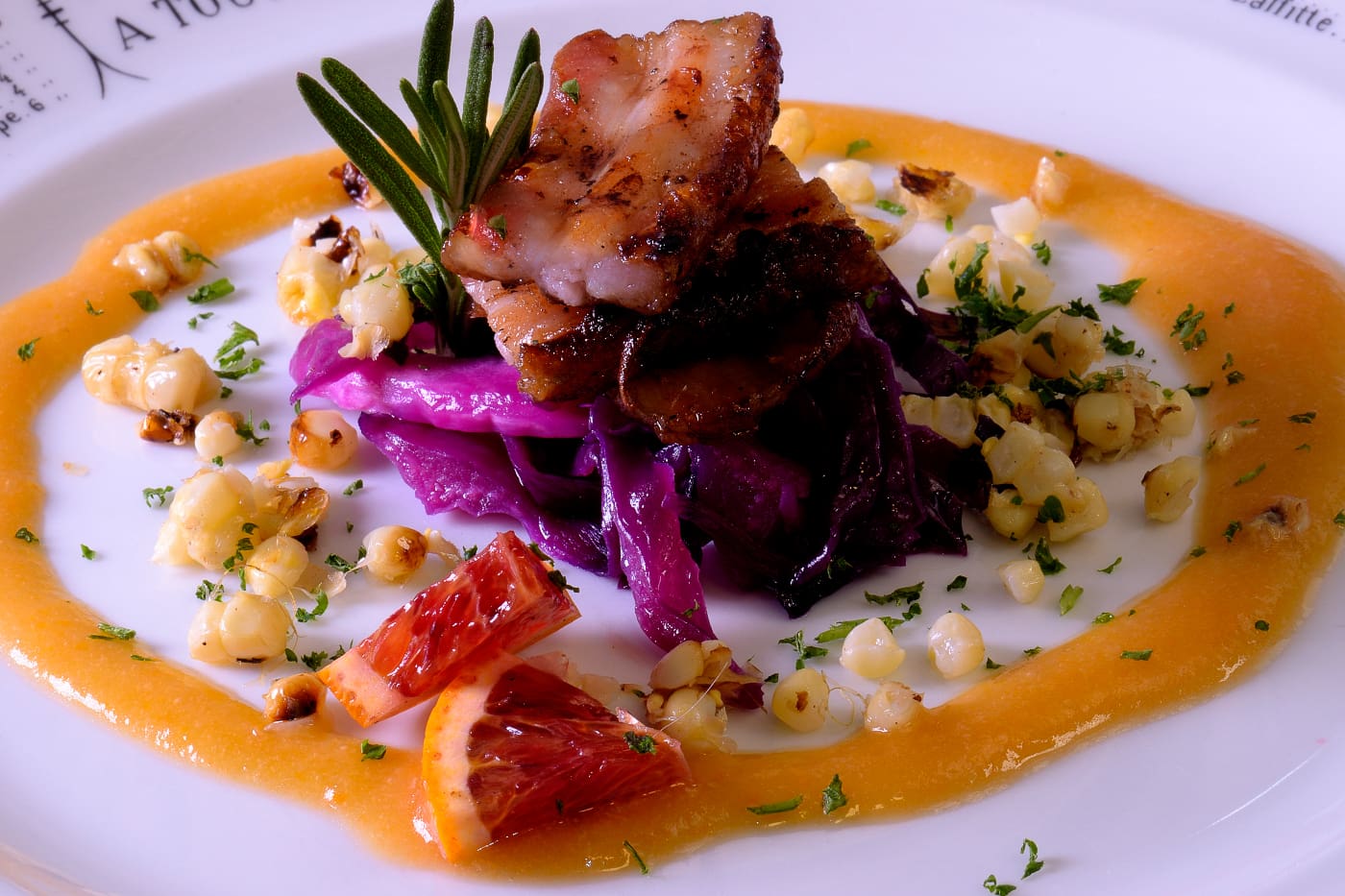
Excellent as a sort of modernist appetizer or light entrée.
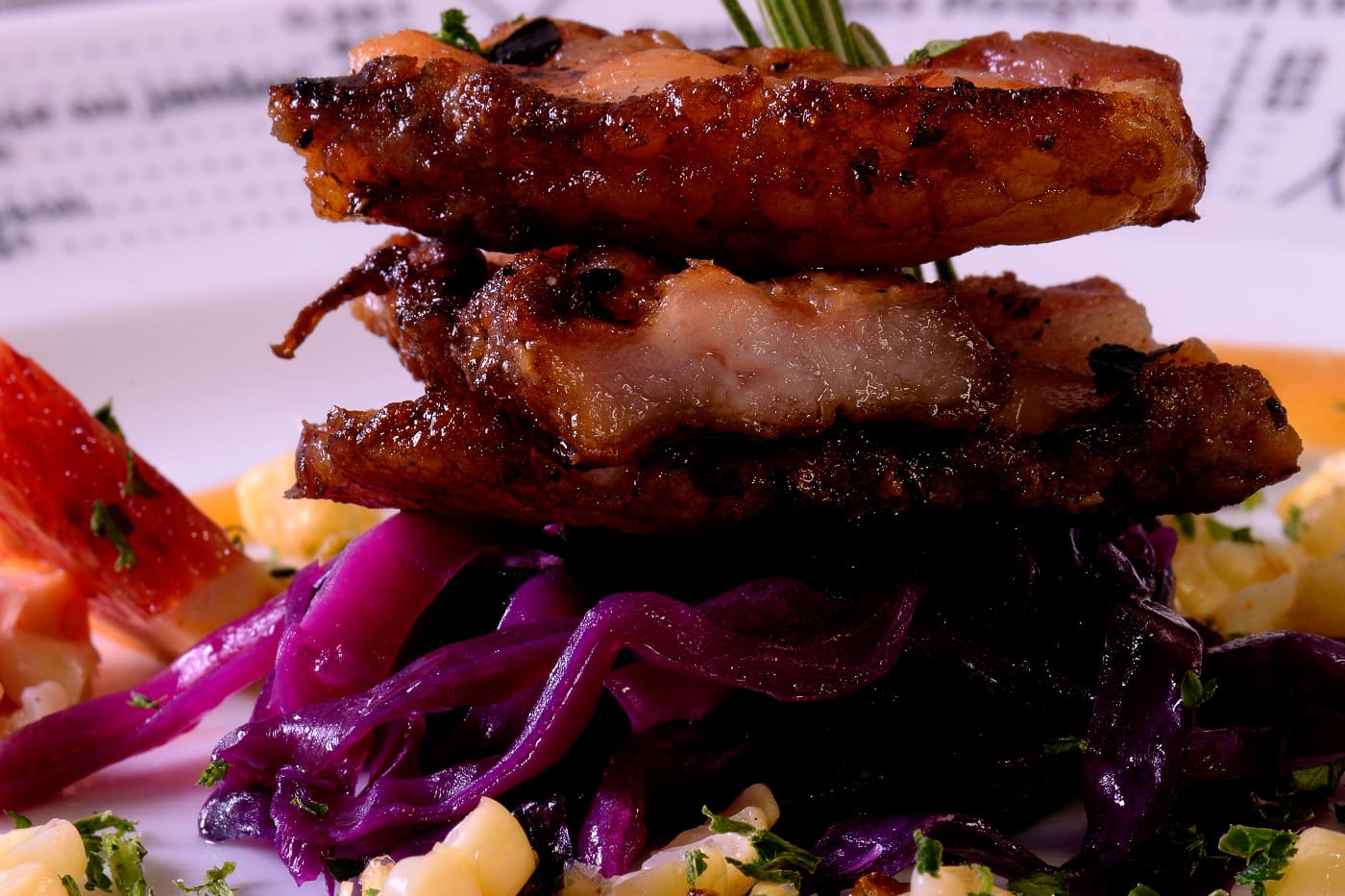
But who would think of doing this with bacon?
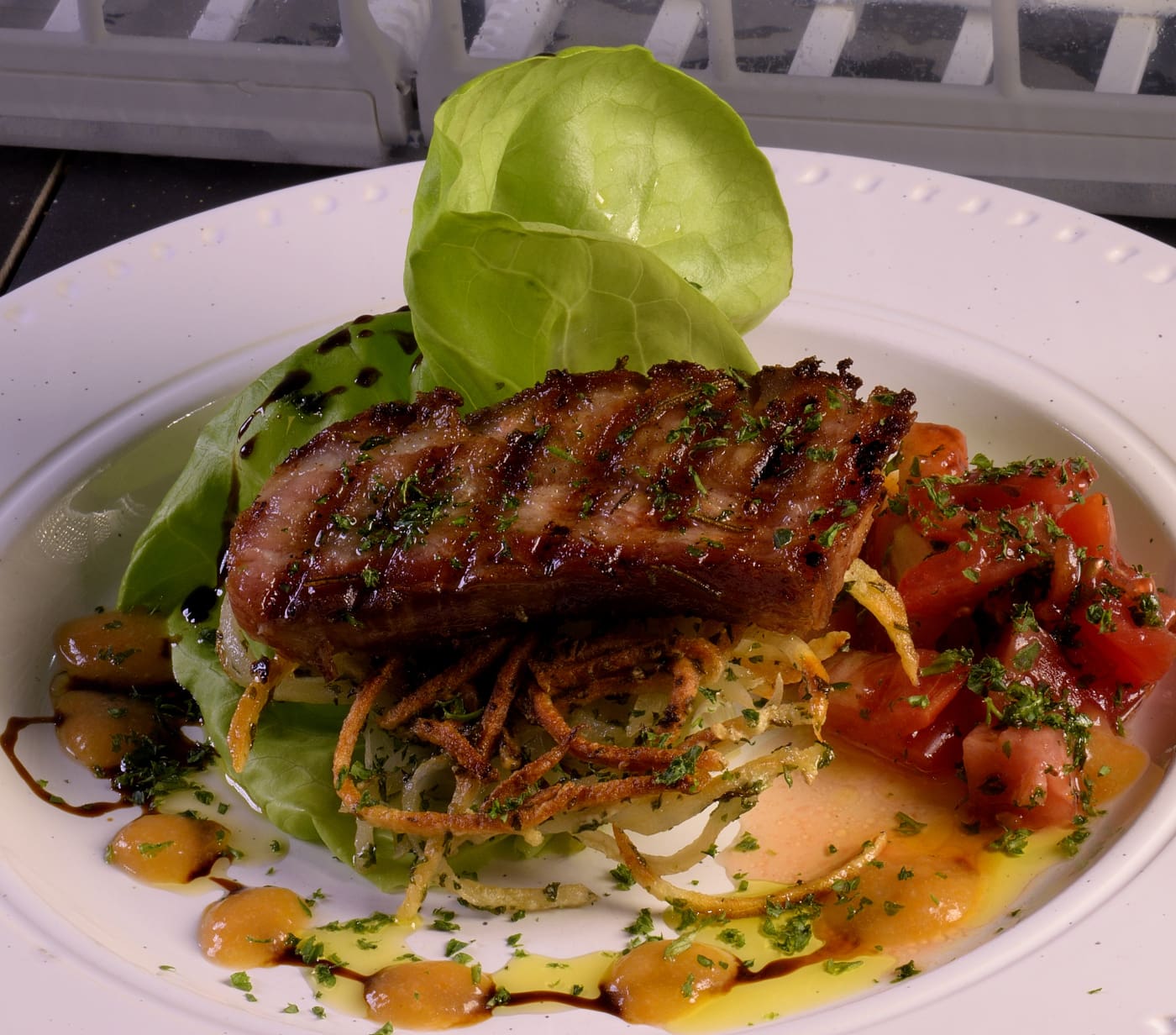
Another “salad” version with Butter lettuce instead of red cabbage, potato crisps, diced heirloom tomatoes, extra virgin olive oil and balsamic syrup.
Norm King
